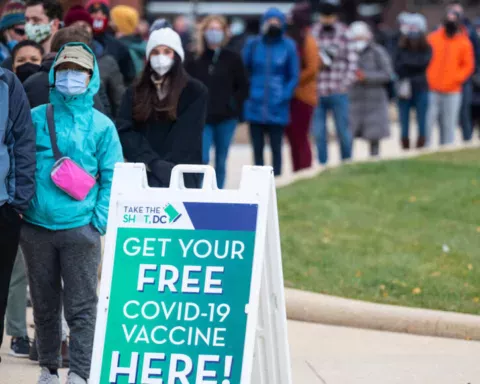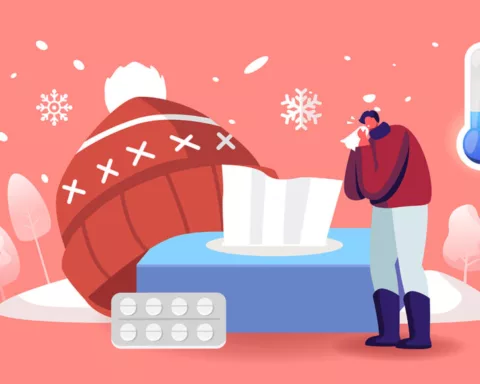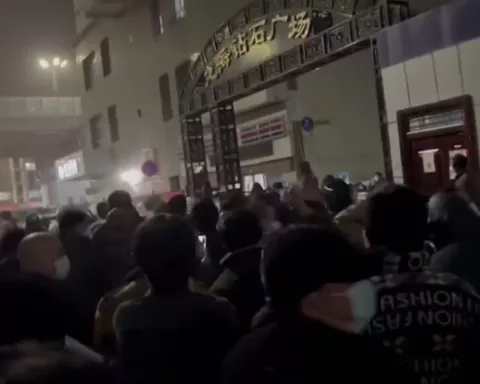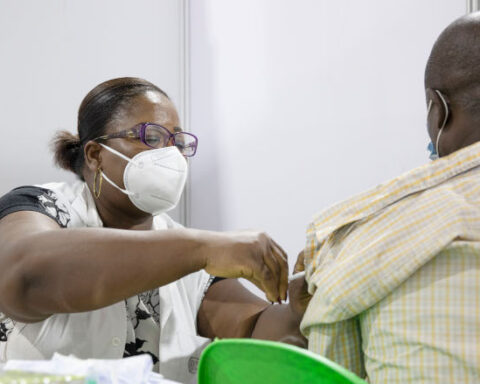In Atlanta, I managed the process to publish international guidance on the CDC website, and the redesign of the global COVID-19 website. I also supported an American Indian tribe in Idaho as they educated, tested, and started to vaccinate more than 6,000 members of their community.
Still, my work did not prepare me for the moment when the coronavirus hit home in December. My 85-year-old father, Michael Kurylo, had trouble breathing. My brother Pete rushed him to a nearby hospital in Davenport, Iowa. Within minutes, Dad was transferred by ambulance to a hospital across the Mississippi River in Illinois with an available ICU bed.
“He has COVID-19 and pneumonia,” Pete told me and my five other siblings who were scattered across the country from northern California to Georgia. He’s in good hands, we told each other. He’s getting medicine and oxygen. He can only get better from here. The next day, the doctors said he might need a ventilator. No, I thought. If he goes on a ventilator, he won’t come off it. At first, Dad agreed to the ventilator. “Do what you need to do,” Dad told the doctor.
I’m not sure why, but he didn’t go on the ventilator. Two days later, his nurse held a phone to Dad’s ear, and we all said goodbye, one at a time, oldest to youngest, including some of his grandchildren. Amazingly, he was alert. We could understand everything he said, and he could hear us. “Love you all,” he said. “We love you, Dad.”
He died the next day. Pete, my sister Monica, and a chaplain were by his side. I was grateful he wasn’t alone.
I watched his funeral via Facebook Live, because it was not safe to travel to Iowa, where he was buried. COVID-19 has killed more than 470,000 Americans, and necessary precautions make it difficult to say goodbye or mourn at a funeral. After working on the COVID-19 response for virtually all of 2020, this was the moment that the global pandemic became deeply personal and painful for me.
Supporting COVID-19 Communication for Americans in Japan
CDC staff have worked on the COVID-19 response in many different ways. I deployed four times, three global assignments and one domestic. Each job had a steep learning curve and required different skills and knowledge. My work with the cruise ship task force was completely different from my work on content for the global COVID-19 website. Each deployment taught me more about COVID-19 and helped prepare me for the next one. Each time, I tried to talk less and listen more.
Little was known about the virus that causes COVID-19 when I flew to Tokyo in February 2020. I reassured my family that everything would be fine. I wasn’t going to see cruise ship passengers in quarantine. Even though we packed N95 medical masks for the trip, we didn’t think we’d be wearing them. “I’m going to be working on a team that meets at the U.S. Embassy,” I told my loved ones. “I’ll be fine.”
We got news updates via a big-screen TV in the embassy auditorium where we worked, elbow to elbow, on our laptops. It soon became clear that COVID-19 was going to be a big deal all over the world.
When I left Tokyo on March 7, everyone on the CDC team was wearing N95 masks. I wore mine on the long flight home to Atlanta, partly because it appeared that people without symptoms could infect others. I did not want to get COVID-19. I took every precaution possible, and so far, I am COVID-19 free.
My Family’s First Brush with COVID-19
As I was flying home, my family had its first unnerving brush with the virus. My husband and two daughters had followed all precautions, including wearing masks, social distancing, staying away from crowds, and handwashing. One daughter, though, was studying in Italy, where the rapid spread of COVID-19 had closed the universities and forced foreign students to leave the country. She returned to Atlanta on the first available flight, then spiked a fever almost immediately after arriving home.
The local health community responded with uncertainty. Her doctor couldn’t fit her in that day. A call to the health department went straight to voicemail. A local hospital invited her to come in, then hesitated and suggested calling 911 instead. Within minutes, an ambulance rolled up, then a fire truck, then a police car. My daughter walked to the ambulance, climbed in, and was driven to the emergency room. After several hours, and several tests, they sent her home, where she waited 4 days in quarantine for her results. She did not have COVID-19.
Working with American Indians on COVID-19
Nine months later, after Dad died, I channeled my grief into working with an American Indian tribe located in southeast Idaho. I volunteered to work with CDC’s Tribal Services Section and looked forward to traveling and learning more about the Shoshone Bannock Tribe. While I worked remotely from my Atlanta home, I still learned a lot about how the tribe communicated with their community of about 6,000 on the Fort Hall Indian Reservation.
Recent CDC studies have shown that American Indian/Alaska Natives are among the racial and ethnic minority groups at higher risk for severe COVID-19 outcomes. CDC has provided more than $200 million in COVID-19 funding to Indian Country, to support tribes and tribal organizations in carrying out COVID-19 preparedness and response activities, including surveillance, epidemiology, laboratory capacity, infection control, and mitigation.
I admire the Fort Hall Business Council’s steely resolve to protect their community. They brief the community once a week through Facebook Live, and worked with CDC to create a public, online dashboard with test results, hospitalizations, deaths, and other COVID-19 data.
They posted short videos of tribal elders talking (in Shoshone and English) about recovering from COVID-19, and the importance of masking, social distancing, handwashing, staying away from large crowds, and treating others with respect. They launched a campaign to “mask up to protect your loved ones,” and printed T-shirts featuring tribal mascot Darryl the Sasquatch wearing a mask. Tribal health workers present on topics such as mental health, stress, and how to ask for help via Zoom. They stress that stigma has no place in their community, and COVID-19 can have an impact on anyone at any time.
It’s anyone’s guess when things will “return to normal,” where we work, live, and play. One thing is certain. The virus is real. It is deadly. Your decision about whether to wear a mask, keep your distance, and wash your hands has an impact on everyone you come into contact with. My father died of COVID-19 because someone else made a choice that eventually affected him. That is hard to accept, but I am learning.
by Elizabeth Kurylo, MCM, CCPH, Health Communication Specialist






